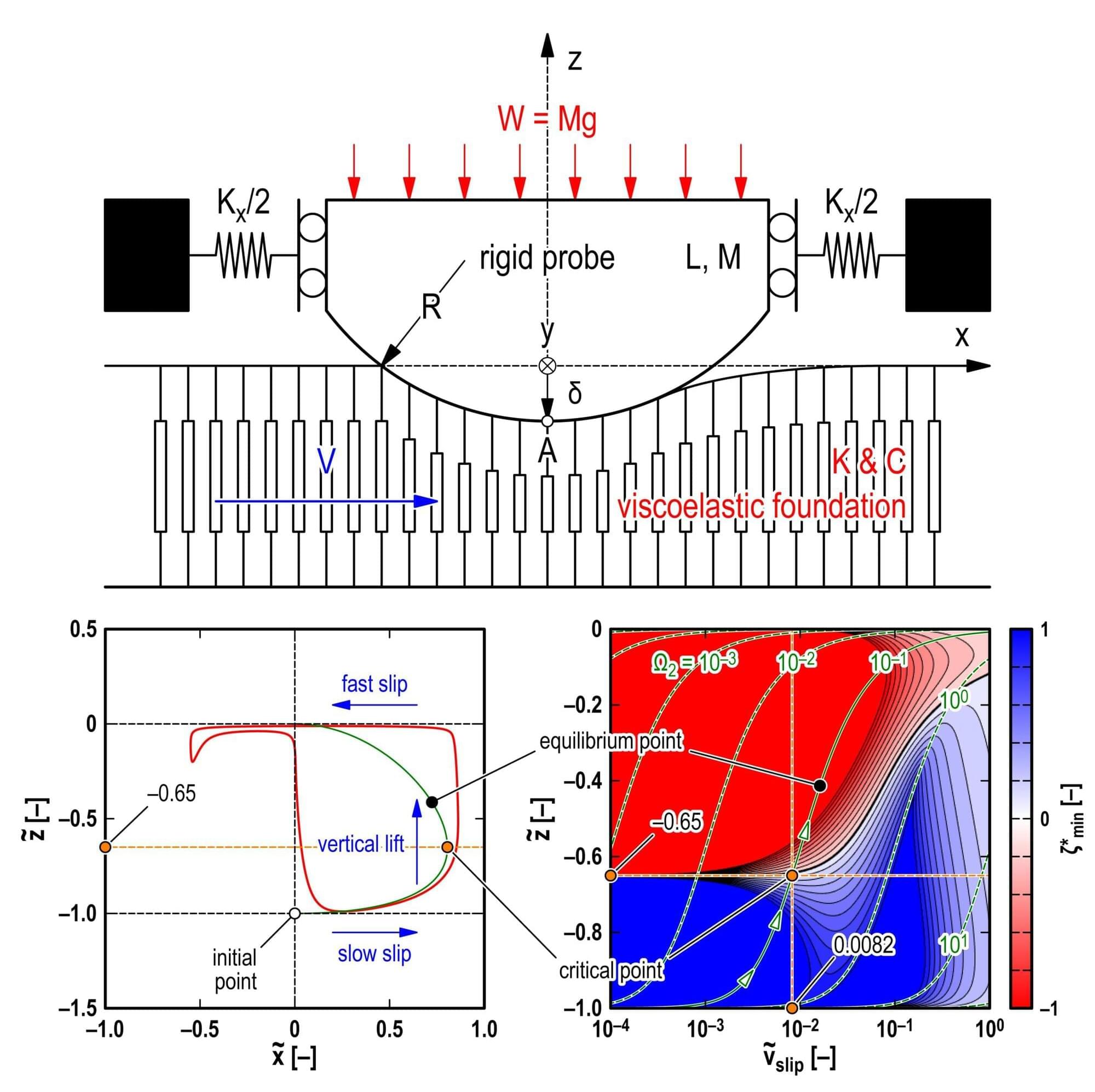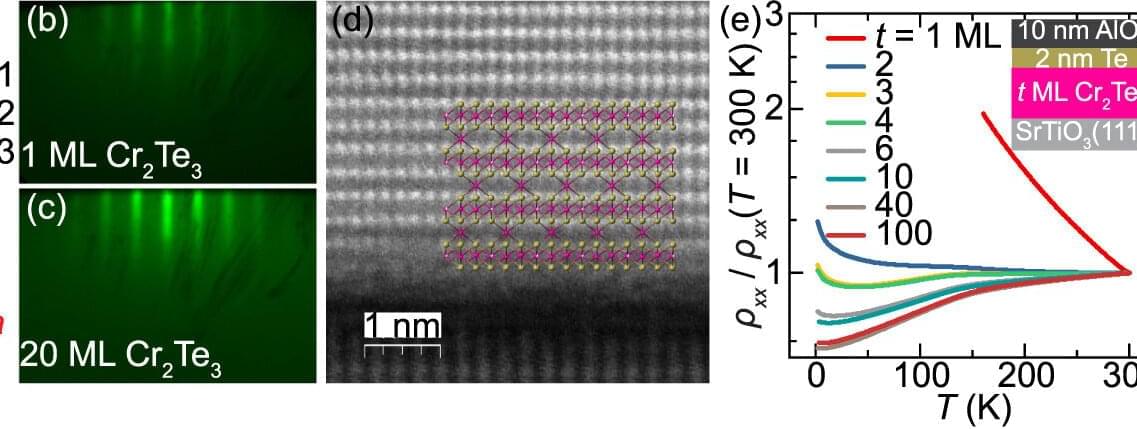We have discovered legions of strange particles that seem to only have a ghostly existence inside materials. Even so, they are the basis of much modern technology — so are they actually real?



Like Earth, Mars is surrounded by an ionosphere—the part of its upper atmosphere where radiation from the sun knocks electrons off of atoms and molecules, creating charged particles. The Martian ionosphere is complex and continuously changes over the course of the day, but its role in atmospheric dynamics and radio communication signals means understanding it is key for Mars exploration.
One way to study the Martian ionosphere is with radio occultation, in which a spacecraft orbiting Mars sends a radio signal to a receiver on Earth. When it skims across the Martian ionosphere, the signal bends slightly. Researchers can measure this refraction to learn about Martian ionospheric properties such as electron density and temperature. However, the relative positions of Mars, Earth, and the sun mean conventional radio occultation cannot measure the middle of the Martian day.
Now, in an article published in the Journal of Geophysical Research: Planets, Jacob Parrot and colleagues deepen our understanding of the Martian ionosphere using an approach called mutual radio occultation, in which the radio signal is sent not from an orbiter to Earth but between two Mars orbiters. As one orbiter rises or sets behind Mars from the other’s perspective, the signal passes through the ionosphere and refracts according to the ionosphere’s properties.

For over 100 years, two theories have shaped our understanding of the universe: quantum mechanics and Einstein’s general relativity. One explains the tiny world of particles; the other describes gravity and the fabric of space. But despite their individual success, bringing them together has remained one of science’s greatest unsolved problems.
Now, a team of researchers at University College London has introduced a bold new idea. Rather than tweaking Einstein’s theory to fit into quantum rules, they suggest flipping the script. Their model, called a “postquantum theory of classical gravity,” aims to rethink the deep link between gravity and the quantum world.
Quantum mechanics thrives on probabilities, uncertainty, and the strange behavior of subatomic particles. It’s helped explain the structure of atoms and power modern technology. Meanwhile, general relativity offers a grand view of the universe, where planets and stars bend spacetime and create what we feel as gravity.

A concept based on an exotic effect in periodic structures may be useful for developing future photonic devices.
A new way to marshal light within optical devices has been demonstrated experimentally by researchers in China. They have been able to induce light to organize itself into specific patterns of pulses as it circulates within a pair of optical fiber loops using a version of a phenomenon—called the non-Hermitian skin effect (NHSE)—that has been predicted but not observed previously [1]. The effect could be used to control light signals in photonic devices such as switches and routers.
In the standard theory for electron behavior in a metallic crystal, the periodic atomic structure leads to so-called Bloch waves—electron quantum states that spread across the entire crystal. But in recent years, theorists have found surprising results for a scenario in which one assumes that a particle such as an electron hops between neighboring sites in a periodic lattice asymmetrically—say, rightward hopping is more probable than leftward hopping. The particle’s quantum states become localized at the edge or surface of the lattice rather than spreading across it. This localization is the NHSE.

Scientists from TU Delft (The Netherlands) have observed quantum spin currents in graphene for the first time without using magnetic fields. These currents are vital for spintronics, a faster and more energy-efficient alternative to electronics. This breakthrough, published in Nature Communications, marks an important step towards technologies like quantum computing and advanced memory devices.
Quantum physicist Talieh Ghiasi has demonstrated the quantum spin Hall (QSH) effect in graphene for the first time without any external magnetic fields. The QSH effect causes electrons to move along the edges of the graphene without any disruption, with all their spins pointing in the same direction.
“Spin is a quantum mechanical property of electrons, which is like a tiny magnet carried by the electrons, pointing up or down,” Ghiasi explains. “We can leverage the spin of electrons to transfer and process information in so-called spintronics devices. Such circuits hold promise for next-generation technologies, including faster and more energy-efficient electronics, quantum computing, and advanced memory devices.”

Researchers at Tampere University and their collaborators from Germany and India have experimentally confirmed that angular momentum is conserved when a single photon is converted into a pair – validating a key principle of physics at the quantum level for the first time. This breakthrough opens new possibilities for creating complex quantum states useful in computing, communication, and sensing.
Conservation laws are the heart of our natural scientific understanding as they govern which processes are allowed or forbidden. A simple example is that of colliding billiard balls, where the motion – and with it, their linear momentum – is transferred from one ball to another. A similar conservation rule also exists for rotating objects, which have angular momentum. Interestingly, light can also have an angular momentum, e.g., orbital angular momentum (OAM), which is connected to the light’s spatial structure.
In the quantum realm, this implies that single particles of light, so-called photons, have well-defined quanta of OAM, which need to be conserved in light-matter interactions. In a recent study in Physical Review Letters, researchers from Tampere University and their collaborators, have now pushed the test of these conservation laws to absolute quantum limit. They explore if the conservation of OAM quanta holds when a single photon is split into a photon pair.

While the Standard Model ℠ describes all known fundamental particles and many of the interactions between them, it fails to explain dark matter, dark energy and the apparent asymmetry between matter and antimatter in the universe. Over the past decades, physicists have thus introduced various frameworks and methods to study physics beyond the SM, one of which is known as the King plot.
The King plot is a graphical technique used to analyze isotope shifts, variations in the energy levels of different isotopes (e.g., atoms of the same element that contain a different number of neutrons). This graphical tool has proved promising for separating effects explained by the SM from signals linked to new physics.
Researchers at Physikalisch-Technische Bundesanstalt, Max Planck Institute for Nuclear Physics, and ETH Zurich recently collected new measurements that tightened King plot-based constraints on the properties of a hypothetical particle that has not yet been observed, known as a Yukawa-type boson.

Atoms slip against one another, eventually sticking in various combinations. Tectonic plates do the same, sliding across each other until they stick in a stationary state. Everything from the tiniest particles to unfathomably large landmasses possesses this fundamental stick and slip characteristic, but only now are scientists beginning to understand the mechanics of the friction underpinning this property.
“The intermittent motion in sliding systems is termed stick-slip since the two surfaces in contact seem to repeat the stick and slip states. However, several precise measurements have found that extremely slow slip occurs in even apparently stick states before every stick-to-slip transition,” said Toshiki Watanabe, doctoral student in Yokohama National University’s Graduate School of Environmental and Information Sciences, who recently co-authored a paper describing a new model to explain the puzzling switch.
“This strange phenomenon, termed the static friction paradox, has remained an unsolved problem for decades.”

A team of international researchers led by the University of Ottawa has made a breakthrough in the development of ultra-thin magnets—a discovery that could lead to faster, more energy-efficient electronics, quantum computers, and advanced communication systems.
The study, led by Hang Chi, Canada Research Chair in Quantum Electronic Devices and Circuits, & Assistant Professor of Physics at uOttawa’s Faculty of Science, demonstrates a new way to strengthen magnetism in materials just a few atoms thick. This is a critical step toward making these tiny magnets practical for real-world technologies.
The paper is published in the journal Reports on Progress in Physics.

Embezzlement of entanglement is an exotic phenomenon in quantum information science, describing the possibility of extracting entanglement from a resource system without changing its quantum state. In this context, the resource systems play the role of a catalyst, enabling a state transition that would otherwise be impossible, without being consumed in the process. For embezzlement of entanglement to be possible, the resource state needs to be highly entangled.
The term “universal embezzler” refers to the idea of a bipartite quantum system where every state is sufficiently entangled to make embezzlement possible. So far, it seemed highly questionable that physical systems exhibiting such strong entanglement properties could exist in the first place.
Yet researchers at Leibniz University Hannover have now shown that universal embezzlement emerges in all critical fermion chains, meaning one-dimensional fermion systems at quantum phase transitions. While their paper, published in Nature Physics, is merely theoretical, it could open new possibilities for the study of many-body physics and for the development of quantum technologies.